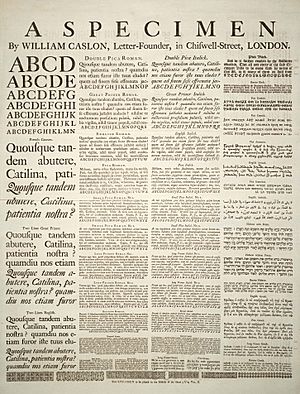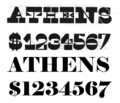Typeface facts for kids

In the world of typography, a typeface is like a family of fonts. Think of it as a main design style for letters and numbers. Every letter, number, or symbol (called a glyph) in a typeface shares a similar look. You might know some typeface names, like Times New Roman, Garamond, or Baskerville.
Each font within a typeface family has its own special details. These include things like its size or how thick or thin its lines are (called its weight). Designers and printers use different fonts for various reasons. The most important reason is to make sure the text is easy to read.
Many typefaces are very old and no longer protected by copyright. For example, "ITC Garamond" is a different typeface from "Adobe Garamond". These are both modern versions of the original Garamond typeface. Garamond was first created way back in the 1500s. There are thousands of different typefaces, and new ones are always being made.
What is Type Design?
The skill of creating typefaces is called type design. People who design typefaces are known as type designers. In today's digital world, they might also be called font developers or font designers.
Every typeface is a collection of glyphs. A glyph is a single letter, number, punctuation mark, or other symbol. Some typefaces are made for special uses. For example, there are typefaces just for making maps. Others are designed for astrology or mathematics.
Famous Typefaces
One very popular typeface is Times New Roman. A British newspaper called The Times asked for this serif typeface in 1931. A serif typeface has small lines or strokes attached to the end of a letter's main strokes.
Later, Times New Roman was changed for printing books. Then it was adapted for use on computers. Today, there are many different versions of this well-known typeface.
Images for kids
-
London Underground's Johnston typeface, printed on a large sign.
See also
 In Spanish: Clasificación tipográfica para niños
In Spanish: Clasificación tipográfica para niños









